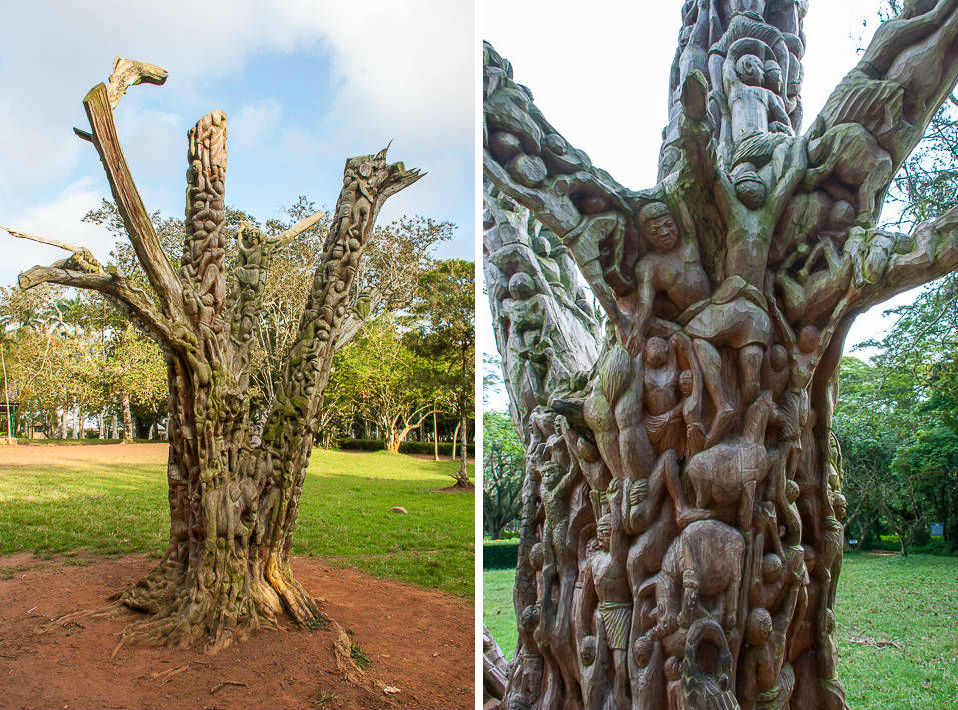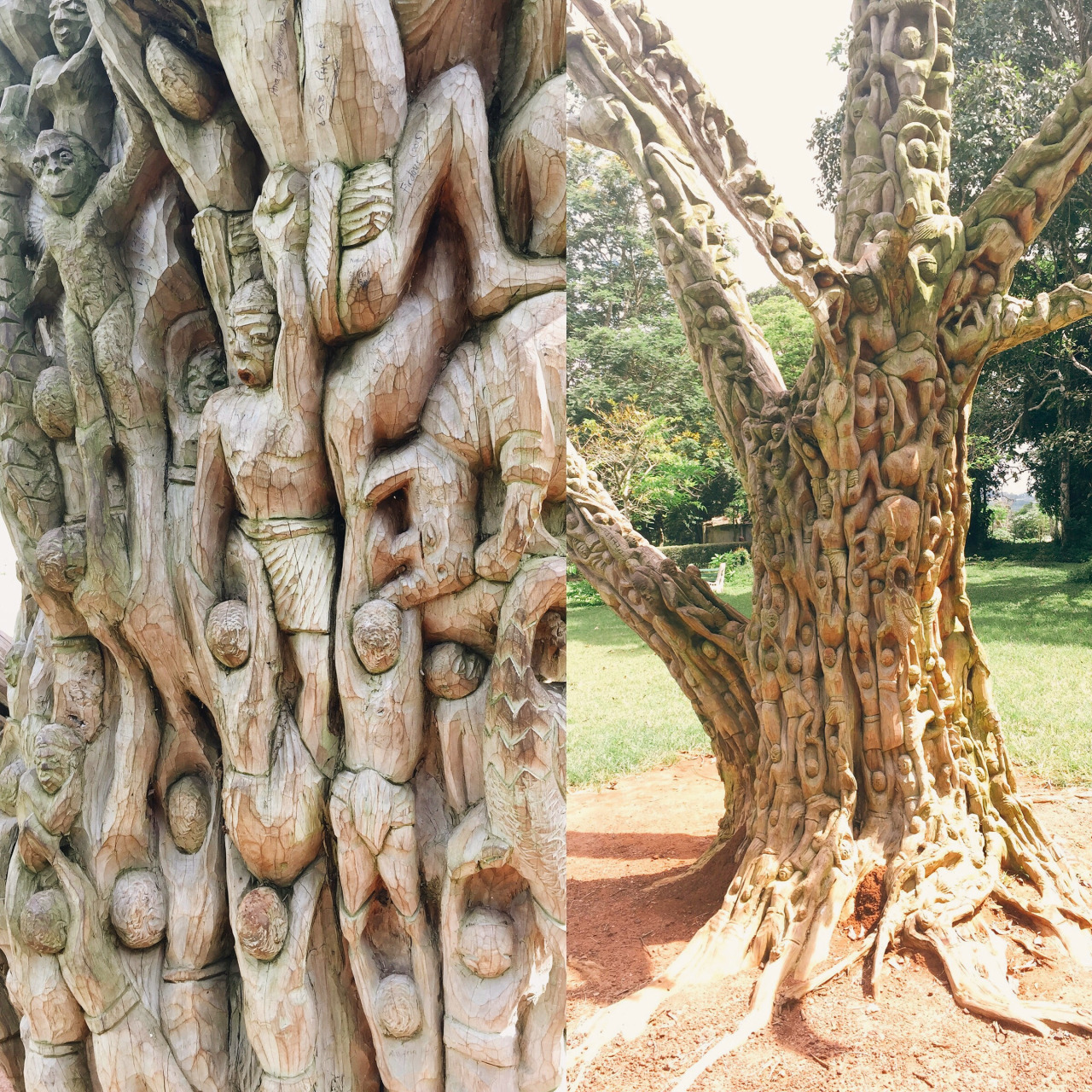The Aburi Botanical Gardens, located in Ghana, is home to a remarkable sculpture known as the “Tree of Life.” This intricately carved monument serves as a powerful symbol of nature’s resilience and the interconnectedness of life.
The “Tree of Life” is not just a stunning piece of art; it is a testament to the skill and creativity of the artisans who crafted it. Carved from wood, the sculpture features detailed representations of various flora and fauna, showcasing the rich biodiversity found within the gardens and the surrounding regions. Each detail tells a story, celebrating the beauty and complexity of nature.
Visitors to the Aburi Botanical Gardens often find the “Tree of Life” to be a serene spot for reflection and contemplation. Surrounded by lush greenery and vibrant flowers, this monument invites individuals to pause and appreciate the wonders of nature. It encourages a deeper connection with the environment, fostering a sense of responsibility toward its preservation.